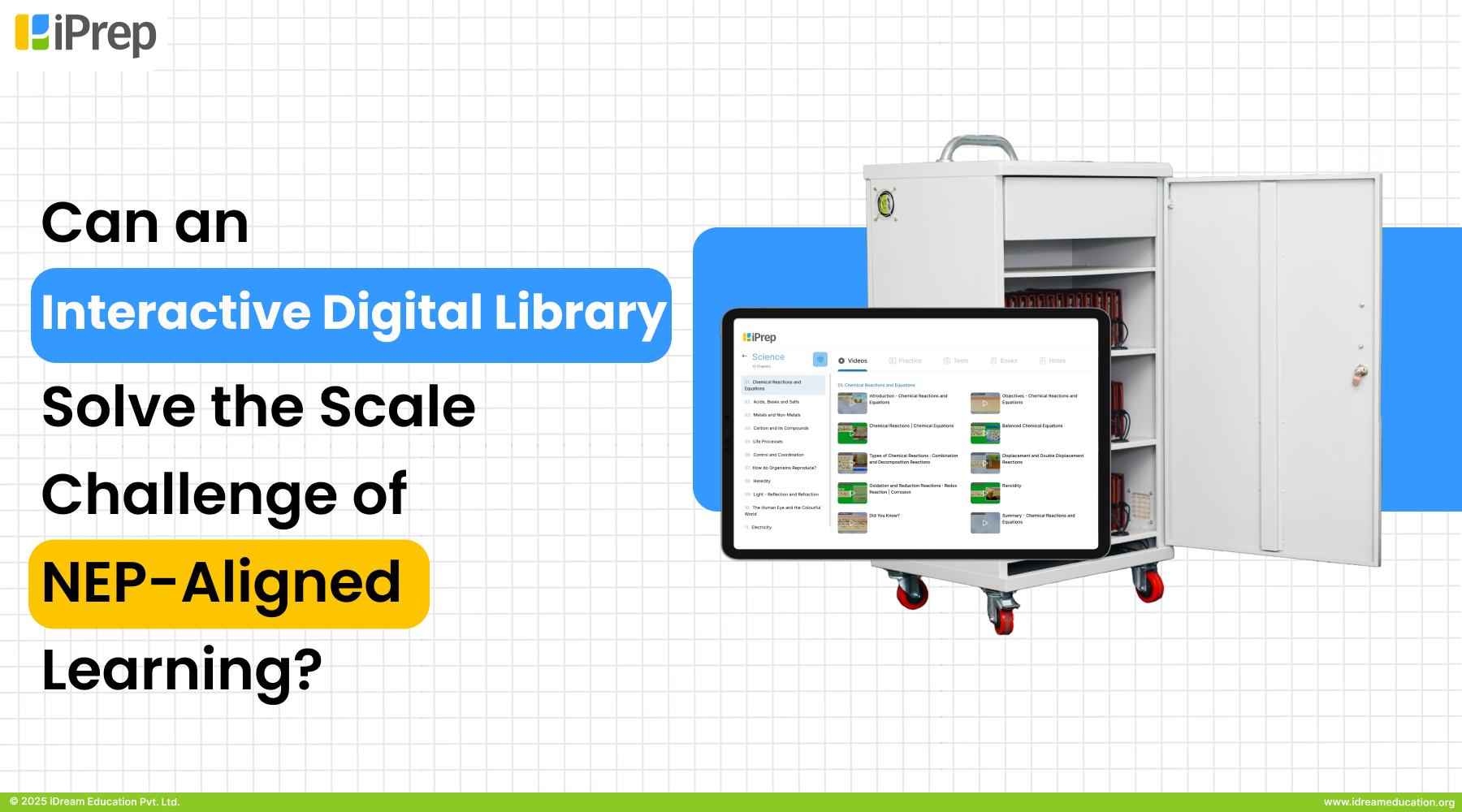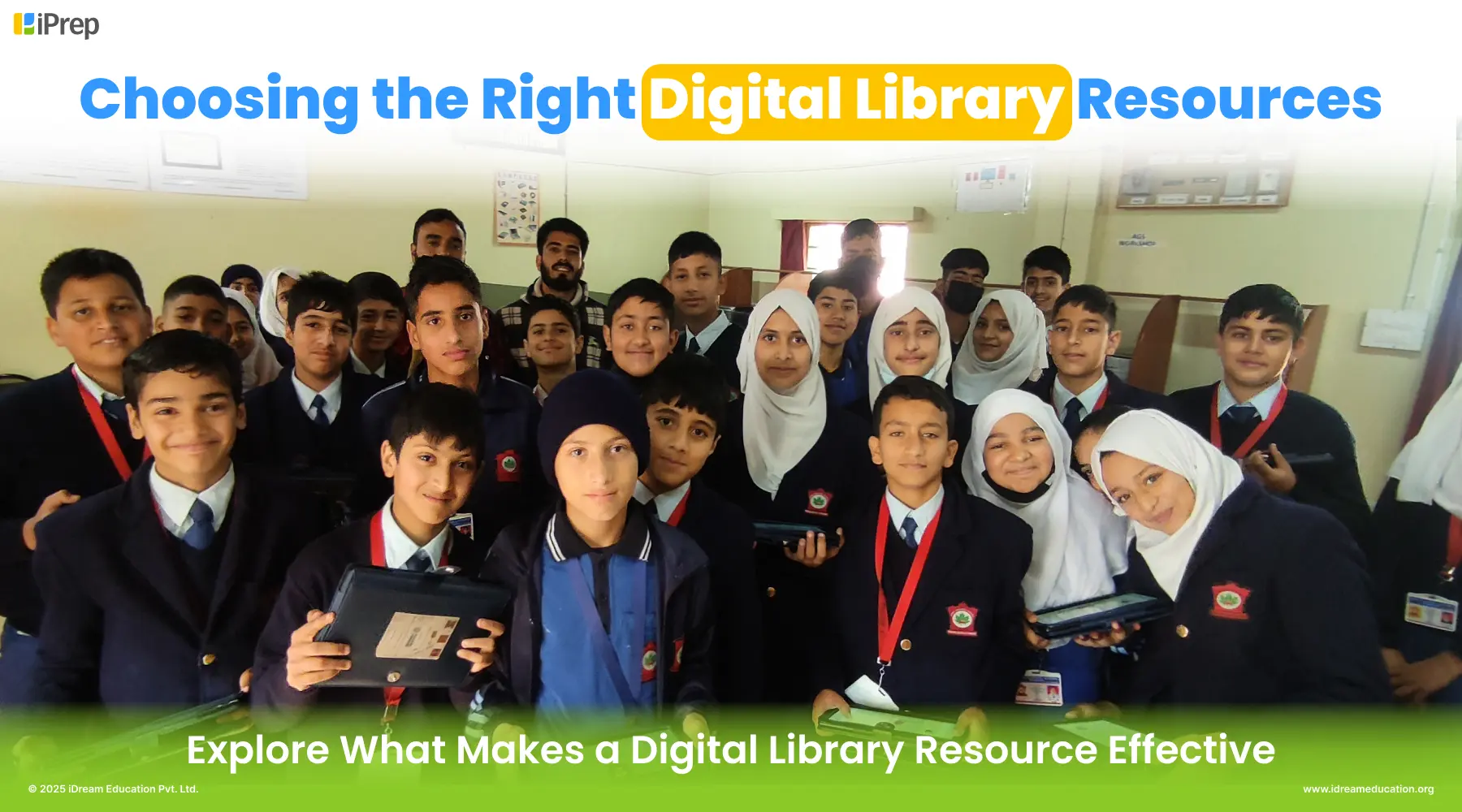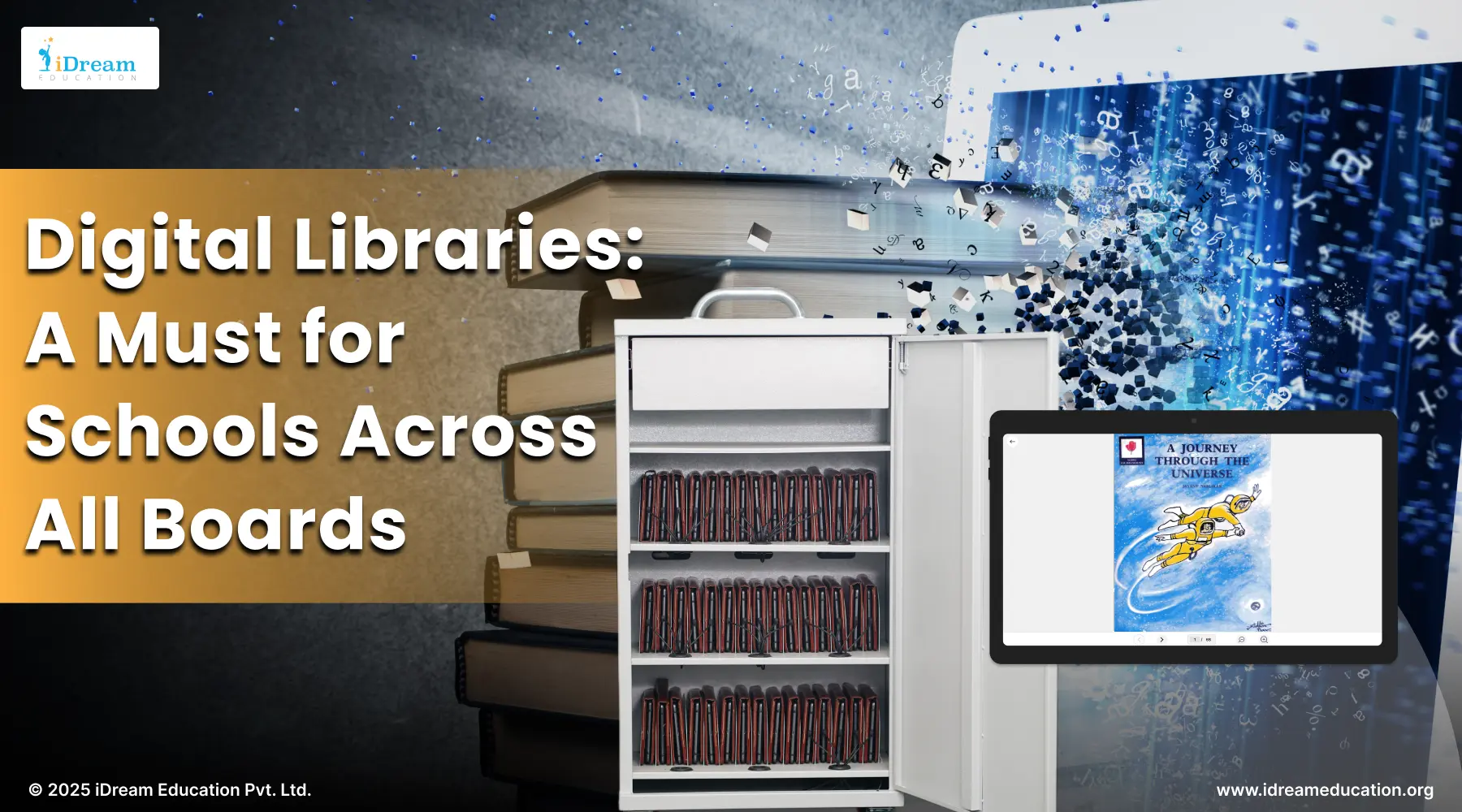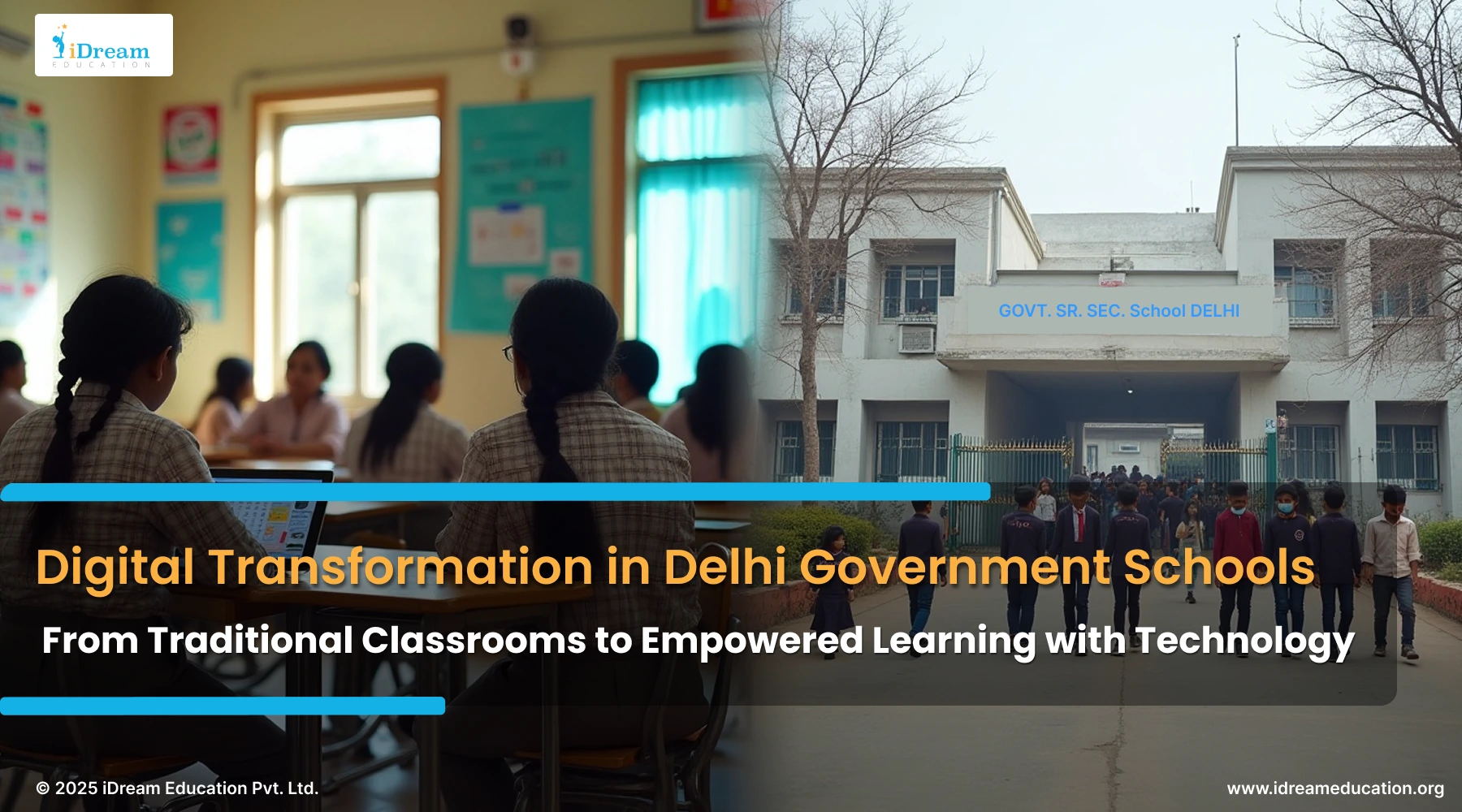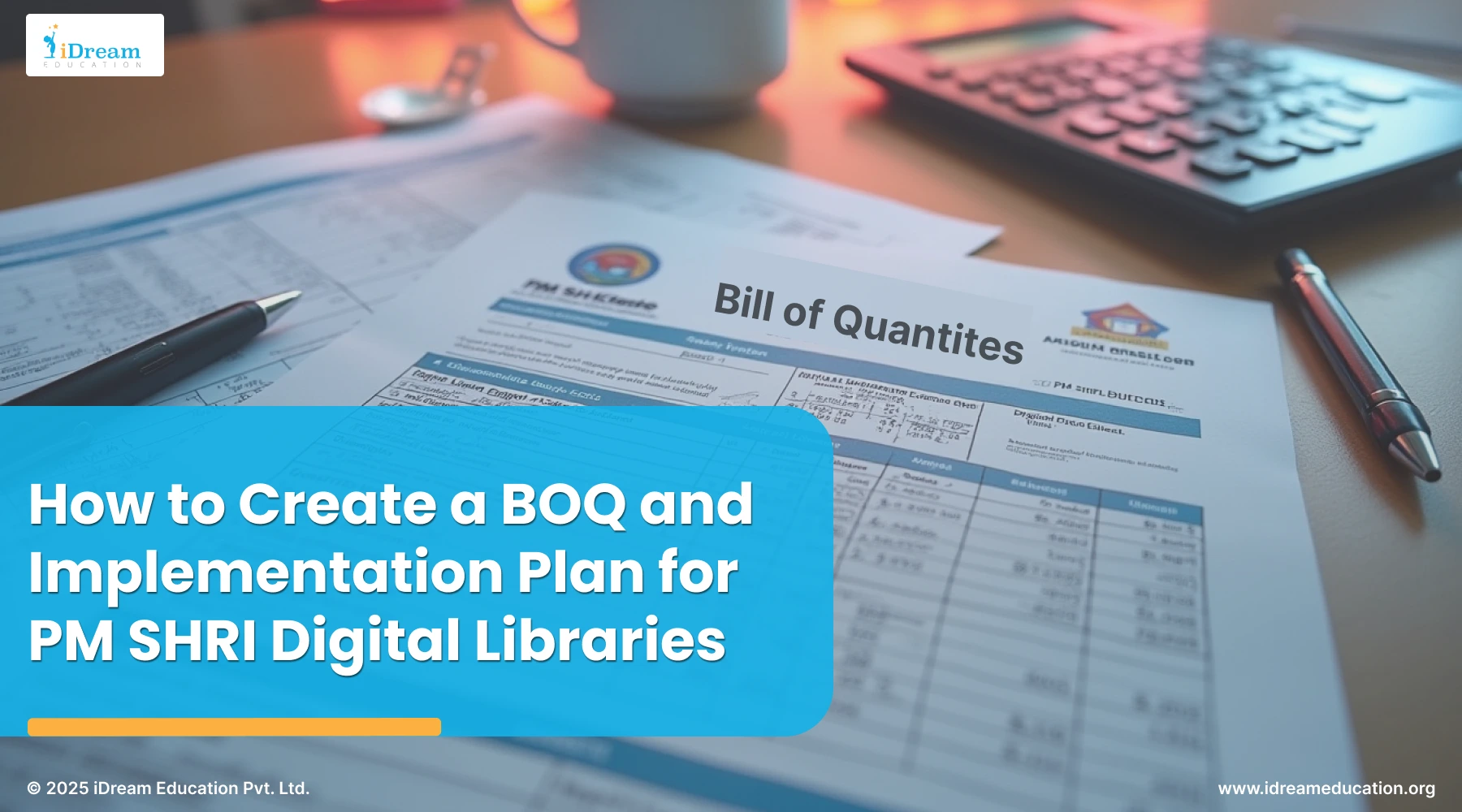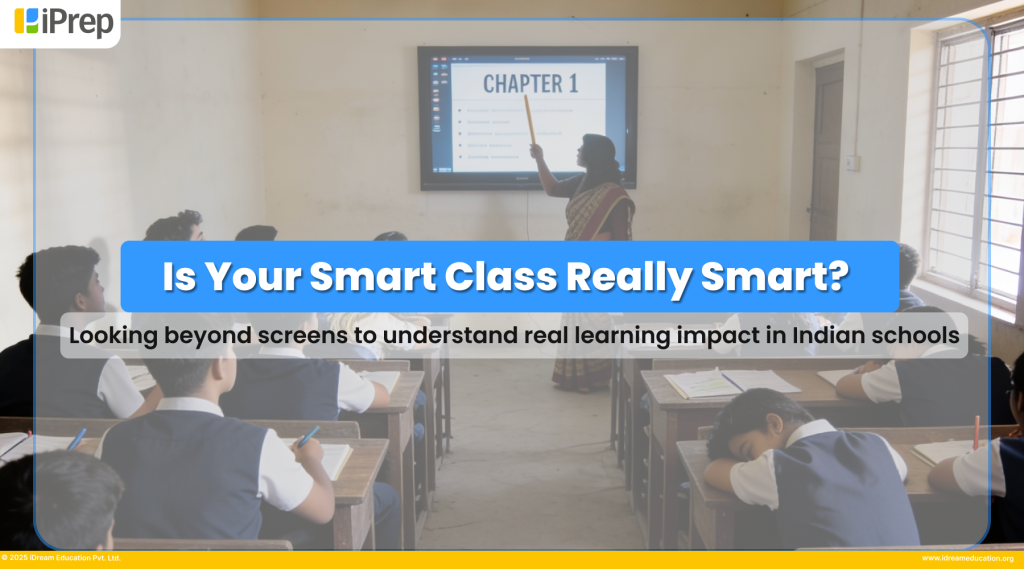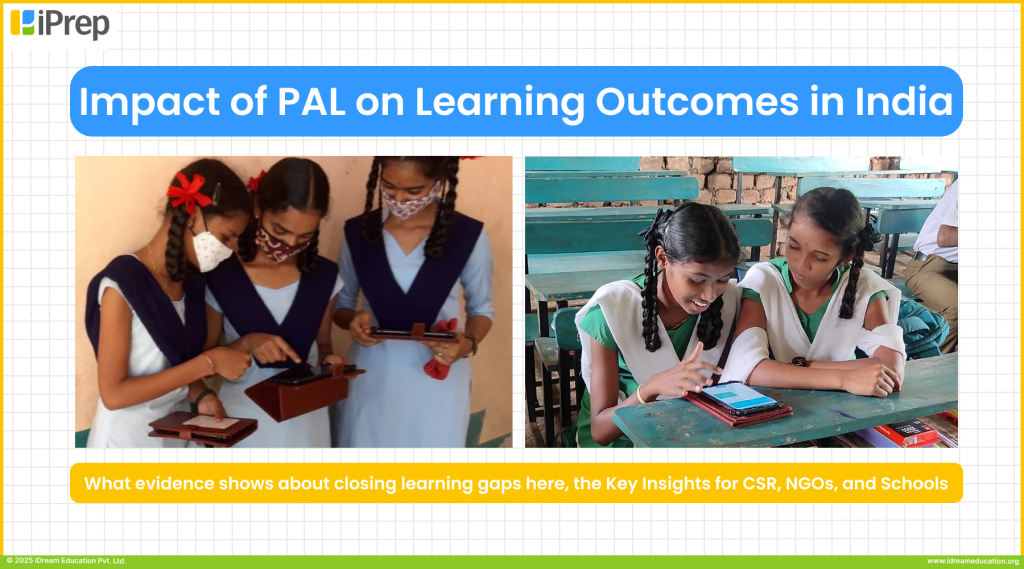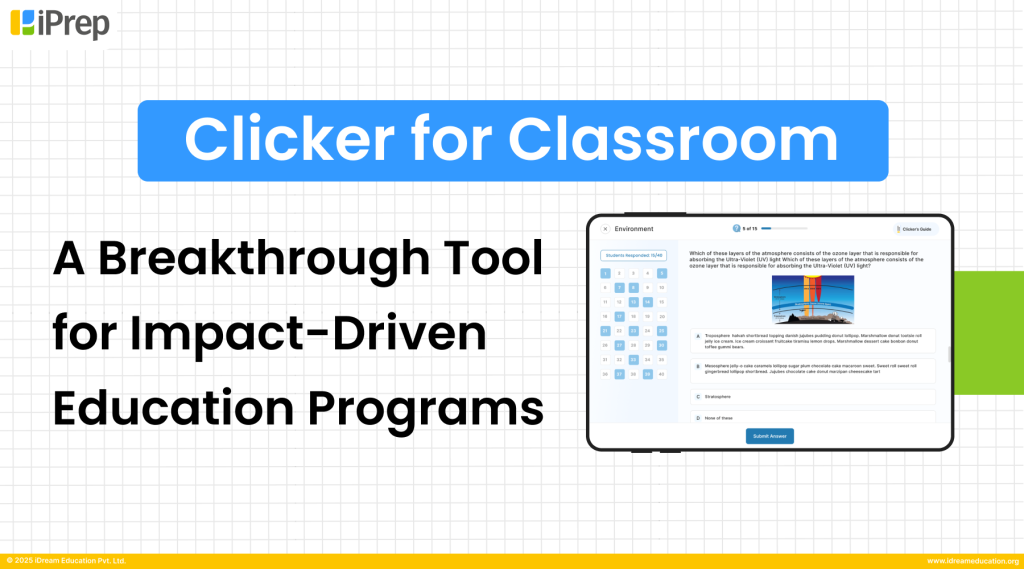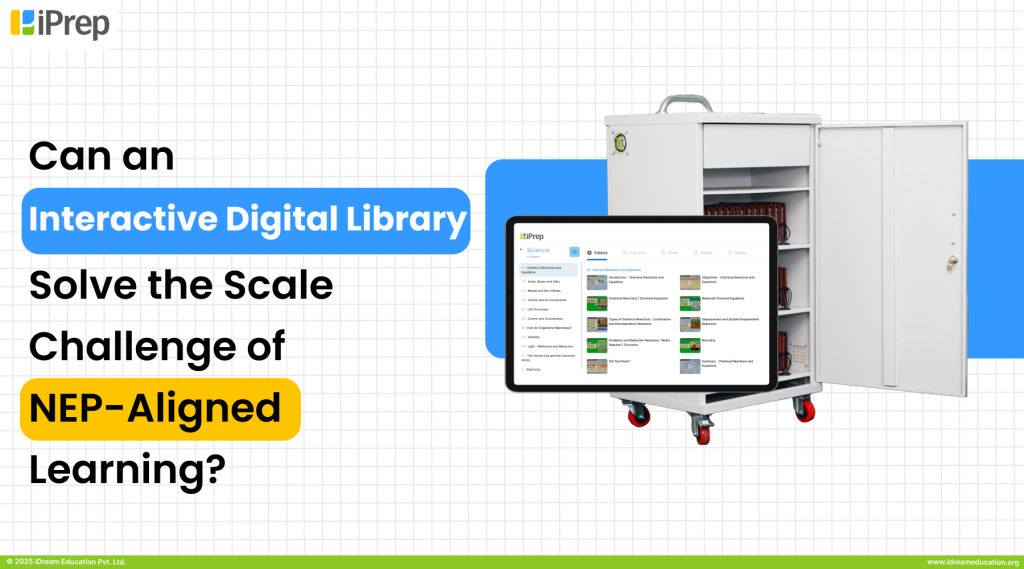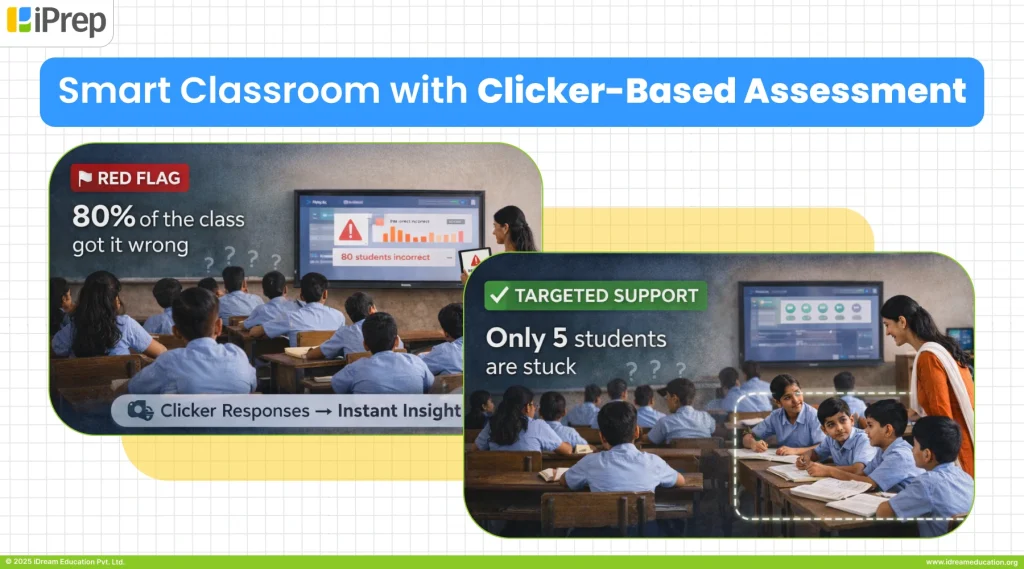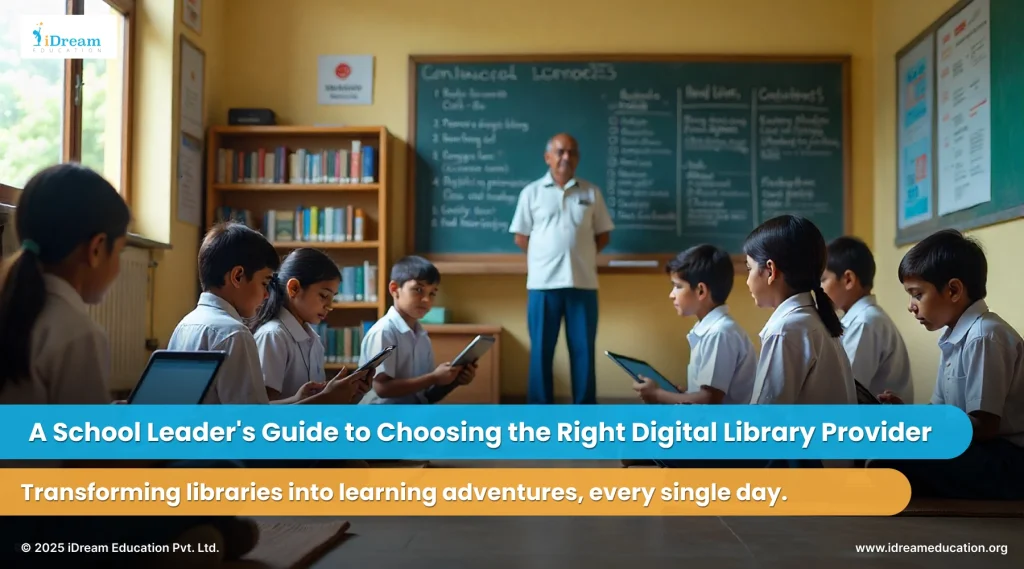
In a quiet government school on the outskirts of Nashik, a classroom turned library comes alive every afternoon not with hushed whispers and chalkboard lessons, but with soft screen taps and wide-eyed curiosity. Students huddle in groups, devices in hand, exploring digital books in Hindi, English, and Marathi. This isn’t a pilot project or a one-off experiment. It’s a shift. And it begins with a question that every school leader must ask: How do you choose the right digital library provider?
Across India, as the education system slowly embraces digital transformation, the demand for online digital libraries and robust digital library resources has grown. Digital Libraries for Government schools are a part of every strategic CSR planner, or for that matter, an NGO programme planner. Not just that, a Digital Library management system is prioritized by many Government schemes, including PMSHRI and Samagra Shiksha Abhiyan, as much as it is a priority for Private schools. But selecting the right digital library provider for this journey is more than just a procurement decision. It’s about understanding your learners, your teachers, your infrastructure, and the long-term impact on how learning feels and functions in your school.
Why the Right Digital Library Provider Matters
A digital library is not just a collection of e-books. For students in rural and urban classrooms alike, it can be the first place they read a science chapter in their mother tongue or discover a storybook that sparks their imagination. The school digital library becomes a doorway not only to knowledge but to a more equitable and inclusive learning environment.
But here’s the challenge. Not all digital library providers are the same. Some offer global content but no offline digital library solution, making it hard for schools with limited internet. Others focus on tech features but ignore language, context, or teacher usability. The result? Well-meaning schools invest CSR funds or budgets into platforms that stay unused or leave students confused and disconnected.
Understanding the Ground Realities First
Let’s step away from brochures and dashboards for a moment. Here’s what it looks like on the ground:
- In a school in Jharkhand, there’s only intermittent electricity, yet students love learning on tablets during their library hour.
- A teacher in a government school in Rajasthan finds her role shifting from a content deliverer to a learning facilitator, as students explore digital textbooks in Hindi and Marwari.
- In a North-East tribal school, students scroll through animated science videos in their dialect, captivated for the first time by how plants breathe.
These aren’t isolated cases. They reflect a broader truth, the digital library platform you choose must reflect the lives of your learners, not just the promises in a sales deck. And the digital library provider behind it should understand these ground realities to build solutions that truly work in diverse school environments.
Key Questions to Ask Before You Decide
1. Does it work offline?
Many schools, especially in rural areas, lack reliable internet. Look for e-library solutions that offer offline content access and auto-syncing whenever connectivity returns. Without this, you risk excluding your most underserved students.
2. Is the content curriculum-aligned and multilingual?
A digital library filled with content that feels unfamiliar or isn’t aligned with NCERT or SCERT can leave many students behind, especially those who learn best in their regional language. To make it truly inclusive, it’s important to choose platforms that offer relatable, curriculum-linked learning. This guide on choosing the best digital library for schools walks you through what to look for.
3. Is it easy for teachers to use?
Even the best digital library will fail if your teachers struggle to guide students through it. Choose provider who provide orientation, not just installations.
4. Can it adapt as your school grows?
What starts as a basic digital reading room may evolve into a full-fledged blended learning setup. Pick a solution that allows for scaling up across classes, languages, and content types.
What a Good Digital Library Experience Looks Like
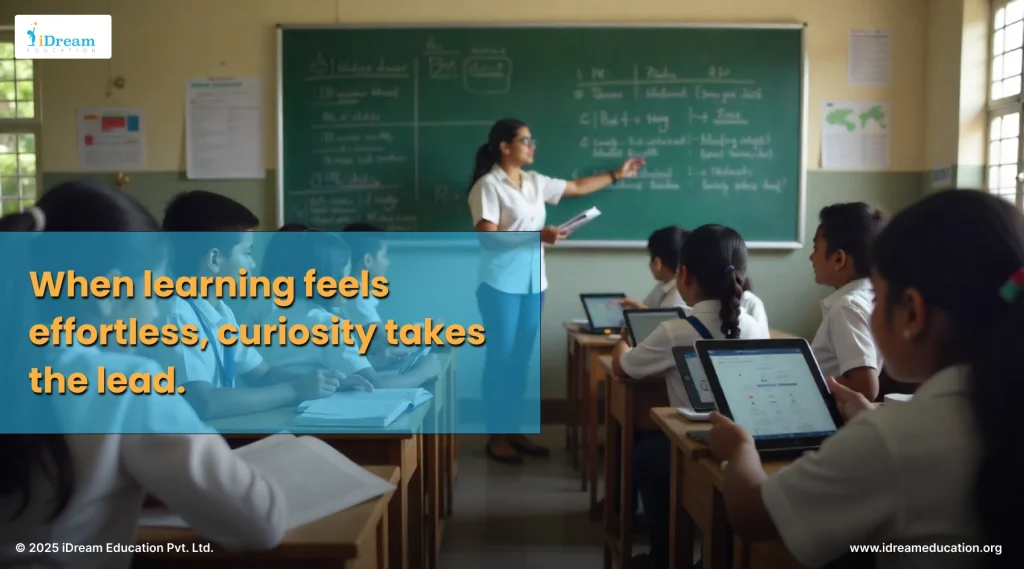
Let’s return to that school in Nashik. Every afternoon, groups of students walk into their library, pick up a tablet, and choose what to learn. Some go through their Class 6 Science chapter. Others listen to a story in Marathi or practice grammar quizzes. The library is quiet, but not silent. It’s alive. There are no complicated logins, no lag due to poor connectivity, and no confusion about what content to explore.
This experience is a result of choosing a digital library provider who understood the school’s bandwidth, language needs, and curriculum. The provider didn’t sell a product. They co-created a solution.
This kind of implementation doesn’t happen by accident, it’s a result of careful planning and strategic alignment. Read this guide to digital library implementation and budgeting
Red Flags to Watch Out For
Before you commit, look out for:
- No offline capability: If a platform can’t function without the internet, it’s not ready for most Indian schools.
- Over-promising dashboards: Metrics are great, but not at the cost of usability. Will your teachers use it?
- Language mismatch: If the content is predominantly in English, students from vernacular backgrounds may disengage.
- One-size-fits-all pricing: A good digital library vendor tailors solutions to your school’s size, goals, and budget.
Budget, CSR, and Sustainability
Many schools fund their digital libraries through CSR support. But spending money is just one part of the puzzle. Are you investing in something that will still serve students five years from now?
This insightful article on where to spend CSR budget for education explores how to fund sustainable digital solutions that offer real, long-term impact.
And remember: implementation is as critical as selection. Here’s the step-by-step guide how to set up a digital library in your school.
Strategic Approach: Build, Train, Sustain
Choosing a digital library provider is not just a buying decision. It’s a strategic one. Here’s a simple framework for school leaders:
- Build: Choose the right device mix, platform, and content library. Make sure it fits your budget and vision.
- Train: Your teachers need orientation. Not just tech training, but pedagogical support on integrating digital learning resources into everyday lessons.
- Sustain: Ask your vendor about long-term content updates, device maintenance, and data protection. Look for support models that don’t disappear after setup.
Education based NGO in India are now setting up digital libraries for long term sustained learning through their programmes.
The Human Impact Is the Real ROI
Ultimately, the measure of success is not in how many devices you install, but in how children engage. Do they want to come back to the library? Do they start asking more questions? Does the learning feel personal?
When digital access is thoughtfully implemented, it creates small revolutions. A Class 8 student in Odisha uses the online digital library provider services to revise for board exams after school hours. A teacher in Himachal Pradesh uses audio stories to help shy students improve their reading. A parent sees their daughter confidently explain what she learned from a short animated video in class.
These moments are the real outcomes. And they begin with choosing the right partner.
What Leadership Looks Like in a Digital Shift
Being a school leader today is about more than managing timetables or infrastructure. It’s about being a bridge between tradition and transformation.
When schools shift from physical bookshelves to e-libraries for schools, it often sparks resistance. Teachers may feel overwhelmed, and students might treat it as playtime. Your role as a leader is to set the tone, not by demanding digital adoption, but by making it feel natural, human, and purposeful.
Here’s what that looks like:
- Start small, but intentionally: Maybe begin with a single room and a dozen devices. Let teachers observe how students engage.
- Create a culture of exploration: Encourage teachers and students to explore the digital learning resources freely, even outside curriculum limits.
- Celebrate small wins: A Class 5 student reading their first digital book in Hindi? That’s a win. A teacher using a video lesson to simplify fractions? Another win.
Your leadership turns these moments into momentum.
Choosing Thoughtfully: Beyond What the Screens Show
When a digital library demo looks smooth, with interactive videos, shiny dashboards, and English narrations, it’s easy to feel impressed. But school leaders and NGOs working in education know that what works in a demo doesn’t always work in a real classroom.
Before making decisions, pause and ask:
- Will this work with our electricity and internet conditions?
- Will a child who’s never used a screen before find joy here?
- Will our teachers feel empowered or excluded?
These questions rarely show up in RFPs. But they are the ones that make or break the experience.
In one CSR initiative in India, a digital library rollout in Uttar Pradesh looked perfect on paper until it was discovered that most of the content was online-only, and the school had patchy 2G connectivity. In contrast, a school in Tamil Nadu used offline-capable devices preloaded with regional-language books. Within months, students were reading and revising even after hours.
Technology can work beautifully in schools, but only when it respects the reality of those schools.
That’s why it’s important to go beyond surface-level features. Sit with your teachers. Ask what kind of stories students enjoy. Check if your students understand English instructions. Test the devices in real settings, not air-conditioned offices.
If you’re planning CSR projects in education in India, choose an education-based NGO that goes beyond installation, one that listens, adapts, and partners with schools on the ground.
Learning from the World, Grounded in Our Needs
Across the globe, digital learning has been seen as a way to make education more inclusive. But access alone doesn’t guarantee equity. It takes a deep understanding of learners’ contexts, something schools in India know all too well.
UNESCO’s research on digital learning highlights this tension between innovation and access. Many countries have struggled with the same challenges Indian schools face: limited infrastructure, language diversity, and digital exclusion.
What sets successful schools apart is not flashy tools, but thoughtful implementation.
Back home, schools that get it right do so by making sure every child, regardless of background, can hold a device, read a lesson in their language, and feel a sense of achievement.
That’s not a technical challenge. It’s a leadership decision.
Integrating Digital Libraries with Classroom Teaching
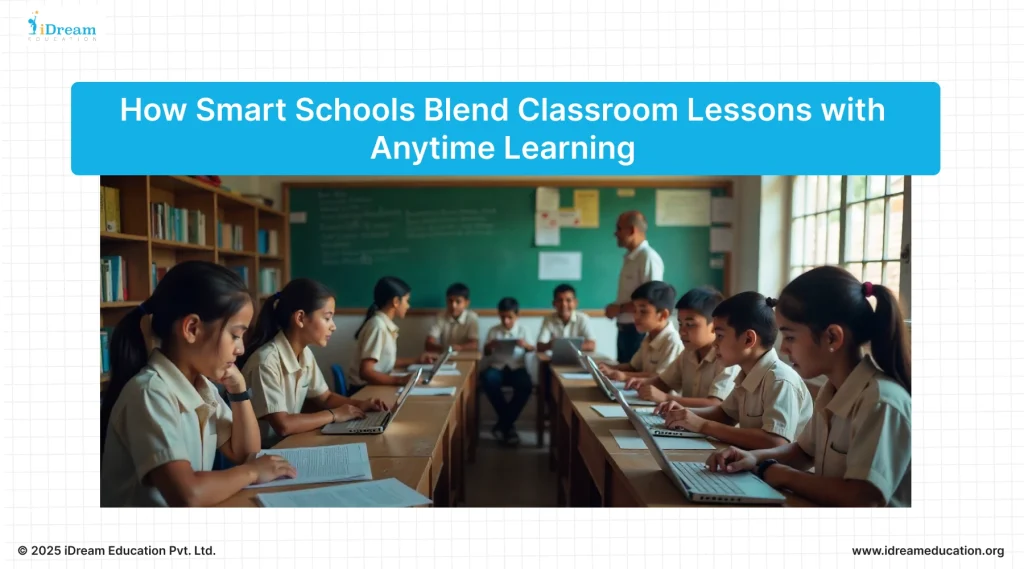
The biggest myth is that a digital library stands alone. It doesn’t.
The best outcomes happen when it integrates with what’s already happening in the classroom. Here’s how:
1. Pre-Lesson Access
Teachers can assign a short story or video for students to explore before the actual lesson. This creates anticipation and curiosity.
2. In-Class Reinforcement
After a difficult math or science lesson, students can revisit concepts on their own devices using video explanations or quizzes.
3. Post-Lesson Practice
Students who want extra practice can use the library independently, whether it’s reading comprehension or general awareness videos.
Role of NGOs and Government Schemes
Many schools implement digital libraries through partnerships with education-focused NGOs or under schemes like Samagra Shiksha, PM SHRI, or District Innovation Funds. But to ensure success, the provider must align with these frameworks.
Key tip for school leaders: Involve your local education department early. Their support can unlock permissions, budget support, and even teacher incentives.
Future-Proofing Your Digital Library Investment
Here’s the truth:- technology changes fast. So, how do you ensure your digital library doesn’t become obsolete?
Here’s how to future-proof your investment:
- Choose open-format content: Avoid platforms locked into proprietary formats.
- Ask about regular updates: Will the provider update content each year?
- Plan for device refresh: Most devices last 4–5 years. Start planning now for replacements.
- Track engagement data: Use simple dashboards to see what students use most. This helps you refine your strategy year on year.
If you’re working with CSR partners, share this planning guide on where to spend your CSR Budget to ensure long-term sustainability.
What Real Impact Looks Like Over Time
In the first few months, it’s the novelty that draws attention, students tapping screens with curiosity, teachers cautiously experimenting, parents peeking into library rooms with a mix of wonder and doubt. But true success reveals itself slowly.
By the second year, the digital library is no longer a “new setup.” It becomes part of how learning flows in your school. A Class 7 teacher now plans her lessons knowing she can assign video-based homework. A quiet student who once struggled with English reads confidently from a bilingual storybook. Group discussions become more informed because now, every child has seen, heard, or read the concept themselves.
Patterns start to emerge in how students learn. Data gently nudges teachers toward students who need a little more time or a different kind of content.
And in this rhythm, quiet, steady, and deeply personal, your leadership shines. Not because you picked a provider, but because you nurtured a space where digital learning became natural, meaningful, and truly inclusive.
Final Words: Choosing With Purpose, Not Pressure
There’s no perfect digital library provider. But there is a perfect fit for your context, your students, and your community.
Don’t rush the decision. Don’t fall for flashy presentations or quick installs. Take your time. Speak with teachers. Test with students. Ask other schools about their journey.
When you choose with intention, your students don’t just get content, they get a future that’s more informed, inclusive, and full of possibility.
And that’s a decision worth making well.
Ready to Get Started?
Choose a digital library provider that truly fulfills your school’s needs and empowers every learner.
To learn more, you may contact us at +917678265039. You can also share your details here or write to us share@idreameducation.org.


